Key Responsibilities and Training for Aiming ServSafe Managers in the Food Sector
Key Responsibilities and Training for Aiming ServSafe Managers in the Food Sector
Blog Article
Comprehensive Food Handlers Training for Hygiene and Security
In today's rapidly progressing food solution landscape, thorough food trainers training has actually emerged as a vital element for making sure hygiene and safety. By instilling necessary techniques associated with hand health, food storage, and cleanliness, this training not just minimizes the threat of foodborne health problems but also strengthens compliance with regulative requirements. The ramifications of such training prolong beyond mere compliance; they touch upon public health and consumer trust fund. Yet, the performance of these training programs can differ dramatically. What aspects truly establish their success in promoting a culture of safety?
Value of Food Safety And Security Training

In addition, food safety and security training assists to make certain that employees know existing laws and guidelines, which are essential for maintaining operational licenses and preventing expensive penalties. Regular training sessions likewise act as a platform for reinforcing finest practices, thus lowering the likelihood of human error, which typically offers as a leading root cause of food contamination.
Furthermore, buying food safety and security training can enhance an establishment's credibility, as clients significantly focus on eating experiences that mirror high security standards. Such proactive steps not just shield consumers however also contribute to the lasting success of food organizations. In recap, thorough food safety training is an important element of food solution procedures, straight influencing both public health and wellness and service sustainability.
Secret Concepts of Health
Keeping high criteria of hygiene is crucial in any kind of food taking care of setting to stop contamination and make certain the safety and security of consumers. The crucial concepts of health include numerous critical practices that food trainers should regularly use.
First, hand health is paramount; food trainers ought to wash their hands completely with soap and water before and after managing food, in addition to after making use of the restroom or touching any kind of potentially contaminated surface areas. Equipment and surfaces should be frequently cleaned and disinfected to eliminate microorganisms. This consists of tools, reducing boards, and kitchen counters, which must be preserved in a tidy condition.


Proper food storage space is likewise essential; raw foods ought to be stored independently from cooked or ready-to-eat items to prevent cross-contamination. servsafe certifications. In addition, preserving proper temperature controls is vital; perishable things ought to be maintained at safe temperature levels to prevent microbial growth
Finally, individual health can not be ignored. Food trainers ought to use tidy clothing, use hair restrictions, and avoid functioning when ill. By adhering to these crucial principles of hygiene, food trainers can substantially lower the danger of foodborne health problems and promote a safer eating experience for all consumers.
Usual Foodborne Ailments
Although numerous foodborne diseases can be stopped via correct health and secure food dealing with techniques, they continue to be a significant public health and wellness problem. Foodborne pathogens can bring about a variety of diseases, varying from moderate intestinal distress to severe complications and also death.
Common foodborne diseases consist of salmonellosis, brought on by Salmonella germs, usually connected to undercooked chicken and eggs. An additional common illness is listeriosis, connected with raw milk items and ready-to-eat meats, which can be particularly unsafe for pregnant ladies and official website immunocompromised individuals. Norovirus, often gotten from contaminated food or surface areas, is understood for its rapid spread and ability to cause outbreaks in communal setups.
Escherichia coli (E. coli) infection, significantly connected with undercooked ground beef and contaminated fruit and vegetables, can bring about serious stomach pains and kidney failing in some instances. Furthermore, Clostridium perfringens, frequently found in large quantities of food that are poorly saved, can cause gastrointestinal disorder with signs and symptoms showing up quickly after usage.
Understanding these health problems is essential for food handlers, as recognition can dramatically lower the danger of contamination and secure public health and wellness. Proper education and training are vital elements in combating foodborne diseases.
Ideal Practices for Food Handling
Efficient food taking care of techniques are important in protecting against the spread of foodborne health problems. Firstly, correct hand hygiene is essential; food trainers should wash their hands extensively with soap and water prior to and after dealing with food, specifically raw meat or chicken - servsafe certifications. This simple action dramatically minimizes the risk of cross-contamination
Secondly, keeping appropriate food storage temperature levels is vital. Regularly disinfect kitchen counters, reducing boards, and utensils, particularly after preparing raw foods. Use different cutting boards for raw and ready-to-eat foods to additionally lessen contamination risks.
Moreover, when preparing food, it is very important to comply with the concept of "first in, initially out" (FIFO) to take care of supply efficiently and lower spoilage. Lastly, constantly check out and adhere to food product labels for risk-free cooking temperature levels and handling directions. By executing these ideal techniques, food trainers can considerably improve food security and secure public health.
Applying a Safety And Security Culture
Creating a safety culture within a food managing atmosphere is necessary for fostering a dedication to food safety among all team participants. This culture highlights the importance of food security as a shared obligation, motivating staff members to prioritize health techniques consistently.
To apply a security culture, companies need to begin by providing extensive training that resolves food handling procedures, possible address hazards, and the value of individual hygiene. Educating sessions need to be interactive and tailored to the certain roles of staff participants, guaranteeing importance and interaction.
In addition, leadership plays a critical function in establishing this culture. Administration should model safe methods and connect the significance of food safety routinely. Identifying and rewarding workers who maintain security criteria can additionally enhance these behaviors.
Furthermore, open interaction channels need to be established, allowing team to report safety concerns without worry of consequence. Routine security audits and feedback sessions can help recognize areas for renovation and enhance responsibility.
Ultimately, cultivating a security culture not just boosts compliance with food safety regulations but also protects public health, promotes staff member morale, and adds to the general success of the food managing facility.
Final Thought
To conclude, detailed food handlers training plays an essential role in advertising hygiene and security within food solution establishments. By equipping workers with essential expertise regarding food security concepts, usual foodborne illnesses, go to my site and best techniques for managing food, such training substantially minimizes wellness risks. Furthermore, fostering a culture of security enhances the establishment's credibility and aligns with consumer assumptions for high safety requirements, ultimately adding to public health defense and the overall success of the food solution market.
In today's quickly progressing food service landscape, extensive food trainers training has emerged as a critical element for making certain hygiene and security.Food security training is important for keeping high requirements in food handling and prep work, with studies suggesting that appropriate training can lower foodborne ailments by up to 30%. In summary, thorough food safety and security training is an important component of food service operations, straight influencing both public wellness and business sustainability.

Report this page